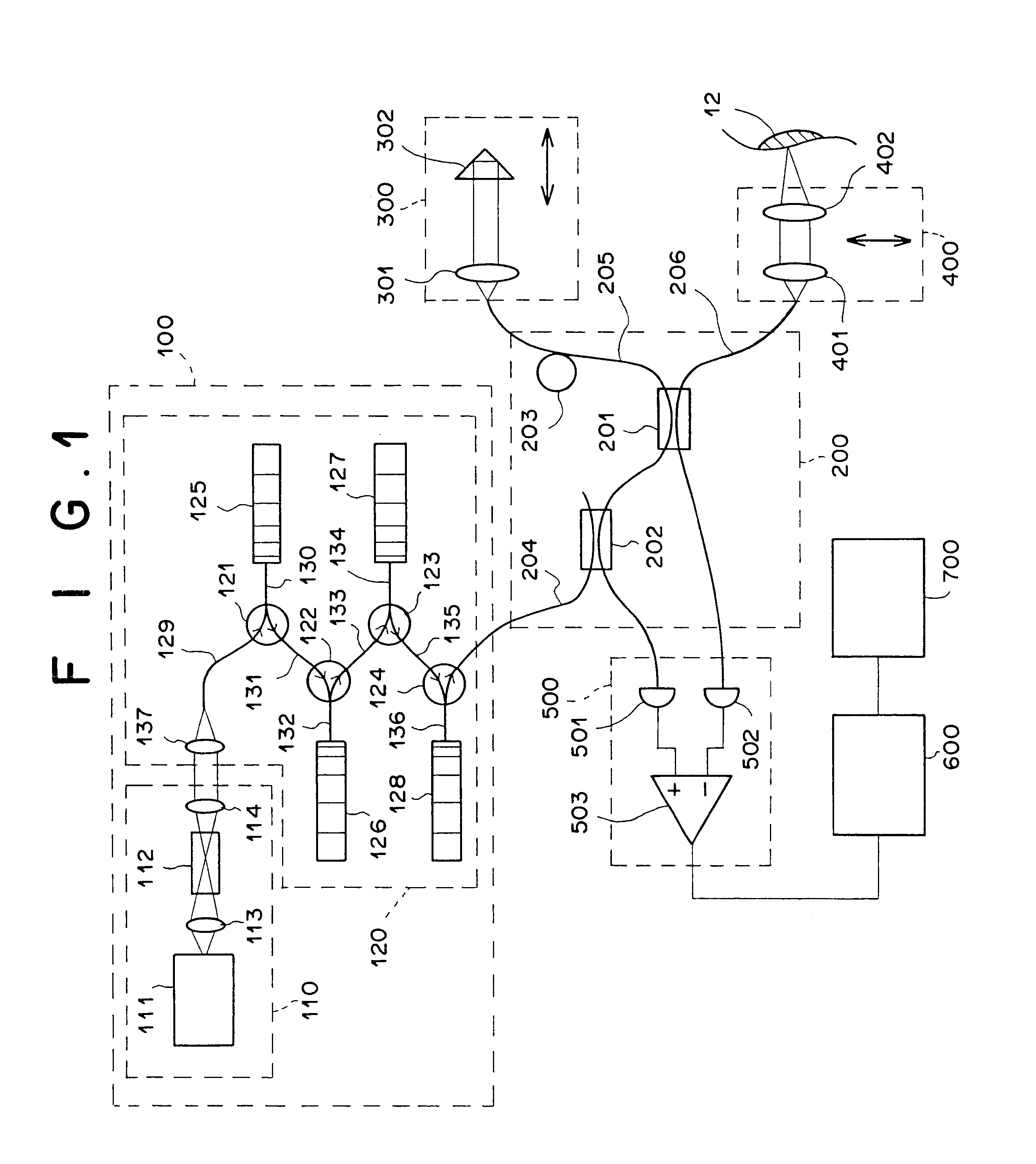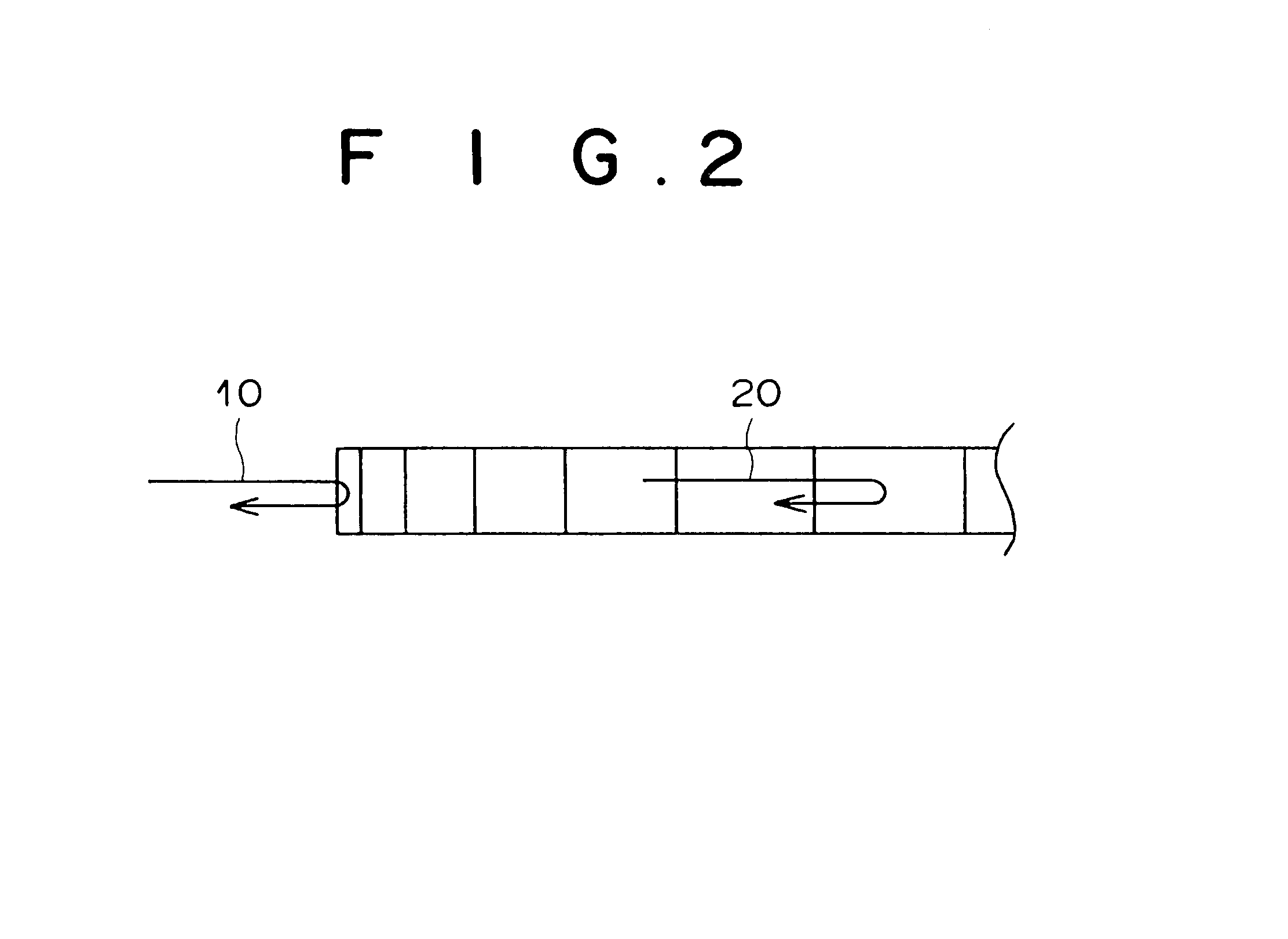Optical coherence tomography apparatus using optical-waveguide structure which reduces pulse width of low-coherence light
a technology of optical waveguide structure and optical coherence tomography, which is applied in the field of optical coherence tomography apparatus, can solve the problems of inability to distinguish the respective layers based on the reflected light, inability to increase the output power of the sld, and interferen
- Summary
- Abstract
- Description
- Claims
- Application Information
AI Technical Summary
Benefits of technology
Problems solved by technology
Method used
Image
Examples
first embodiment
Advantages of First Embodiment
In the first embodiment of the present invention, the light source unit 100 is constituted by the pulsed light source 110 and the pulse-width reduction unit 120, and the pulsed light source 110 is constituted by the erbium-doped fiber laser 111 and the second-harmonic generator 112. In addition, the pulse-width reduction unit 120 reduces the pulse width of the low-coherence light by using the chirped FBGs 125 to 128, which are linear fiber Bragg gratings of the refractive-index modulation type. Therefore, the size and the cost of the light source unit 100 are reduced, and the usability of the light source unit 100 is increased.
In addition, the low-coherence light L1 emitted from the light source unit 100 has a center wavelength of 780 nm, a pulse width of about 5 fs, and a coherence length of 3 micrometers. That is, the resolution in the coherence interference is as high as 3 micrometers. Thus, the resolution in the coherence interference is so increase...
second embodiment
Advantages of Second Embodiment
The optical coherence tomography apparatus as the second embodiment of the present invention has the following advantages as well as the advantages of the first embodiment.
Since the optical fiber amplifier unit 900 is provided, and the reflection light L4 is amplified before the interference with the reference light L2, it is possible to obtain tomographic information having an enhanced signal-to-noise ratio while keeping the intensity of the signal light L3 at such a level that the safety of the portion 12 of the living tissue is secured. In addition, even when the reflection light L4 is returned from a deep area from which the conventional optical coherence tomography apparatuses cannot obtain tomographic information, the interference light L5' generated by the interference between the reference light L2 and the amplified reflection light L4' can be detected, and therefore the tomographic information can be obtained. That is, the depth from which tom...
PUM
| Property | Measurement | Unit |
|---|---|---|
| wavelength | aaaaa | aaaaa |
| coherence length | aaaaa | aaaaa |
| coherence length | aaaaa | aaaaa |
Abstract
Description
Claims
Application Information
 Login to View More
Login to View More - R&D
- Intellectual Property
- Life Sciences
- Materials
- Tech Scout
- Unparalleled Data Quality
- Higher Quality Content
- 60% Fewer Hallucinations
Browse by: Latest US Patents, China's latest patents, Technical Efficacy Thesaurus, Application Domain, Technology Topic, Popular Technical Reports.
© 2025 PatSnap. All rights reserved.Legal|Privacy policy|Modern Slavery Act Transparency Statement|Sitemap|About US| Contact US: help@patsnap.com



